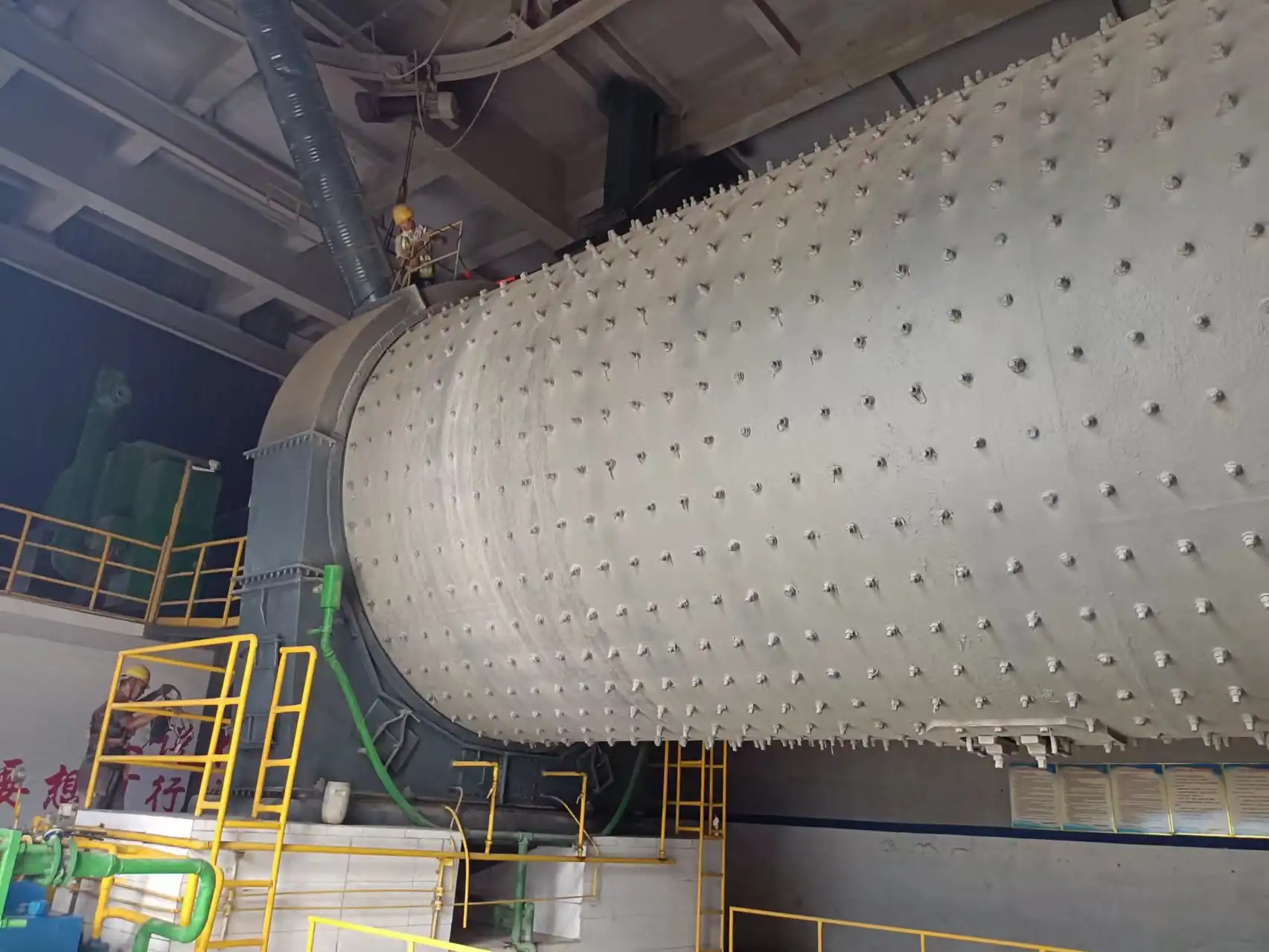Chromium content thresholds for acidic slurry resistance
The resistance of ball mill media to chemical attack in acidic slurries largely depends on their chromium content. High-chromium grinding balls exhibit superior corrosion resistance compared to their low-chromium counterparts.
The role of chromium in corrosion resistance
Chromium forms a protective oxide layer on the surface of the grinding media, shielding it from chemical attack. This layer acts as a barrier, preventing direct contact between the corrosive slurry and the underlying metal.
Chromium content thresholds
Generally, ball mill media with chromium content above 12% are considered high-chromium and offer enhanced resistance to acidic slurries. Some key threshold levels include:
- 12-15% Cr: Moderate resistance to acidic environments
- 15-18% Cr: Good resistance to most acidic slurries
- 18-28% Cr: Excellent resistance to highly corrosive acidic slurries
Impact of other alloying elements
While chromium is the primary element responsible for corrosion resistance, other alloying elements can also contribute. For example, the addition of molybdenum can further enhance the media's resistance to pitting corrosion in chloride-containing environments.
Passivation layers on high-alloy grinding media
Passivation layers are thin, protective films that form on the surface of high-alloy grinding media, providing an additional defense against chemical attack in corrosive slurries.
Formation of passivation layers
When exposed to oxygen or oxidizing environments, the chromium in high-alloy grinding media reacts to form a thin, adherent layer of chromium oxide (Cr2O3). This passivation layer is self-healing and continuously reforms if damaged, offering ongoing protection against corrosion.
Characteristics of effective passivation layers
An effective passivation layer on ball mill media should possess the following characteristics:
- Uniformity: The layer should cover the entire surface of the grinding media evenly
- Adherence: Strong bonding to the underlying metal ensures the layer remains intact during grinding operations
- Stability: The layer should maintain its protective properties across a wide range of pH levels and temperatures
- Self-healing: The ability to reform quickly if damaged during the grinding process
Factors affecting passivation layer performance
Several factors can influence the effectiveness of passivation layers on high-alloy grinding media:
- Alloy composition: Higher chromium content generally results in more robust passivation layers
- Surface finish: Smoother surfaces tend to form more uniform and effective passivation layers
- Environmental conditions: Extreme pH levels, high temperatures, or the presence of certain ions can impact layer stability
pH stability ranges for different media compositions
The pH stability range of ball mill media is a critical factor in determining its suitability for use in various corrosive slurries. Different media compositions exhibit varying levels of stability across the pH spectrum.
Low-chromium media
Low-chromium grinding media, typically containing less than 12% chromium, generally have a limited pH stability range:
- Optimal pH range: 6-9
- Moderate resistance: pH 5-6 and 9-10
- Poor resistance: pH < 5 or > 10
High-chromium media
High-chromium grinding balls, containing 12-28% chromium, offer a broader pH stability range:
- Optimal pH range: 4-12
- Moderate resistance: pH 2-4 and 12-13
- Poor resistance: pH < 2 or > 13
Ceramic media
Ceramic grinding media, such as alumina or zirconia balls, often provide the widest pH stability range:
- Optimal pH range: 1-14
- Excellent resistance across the entire pH spectrum
Factors influencing pH stability
Several factors can affect the pH stability of ball mill media:
- Temperature: Higher temperatures can reduce pH stability ranges
- Presence of oxidizing agents: Can enhance corrosion at extreme pH levels
- Slurry composition: Certain ions or compounds may interact with the media surface, affecting stability
Optimizing media selection for corrosive environments
Selecting the appropriate ball mill media for corrosive slurries requires careful consideration of various factors:
Slurry analysis
Conduct a thorough analysis of the slurry to determine:
- pH range during operation
- Presence of corrosive agents (e.g., chlorides, sulfates)
- Temperature variations
- Solid particle characteristics
Material selection criteria
Based on the slurry analysis, consider the following criteria when selecting grinding media:
- Chromium content: Choose high-chromium media for highly corrosive environments
- Alloy composition: Consider additional alloying elements for specific corrosion resistance needs
- Surface treatment: Evaluate the benefits of surface-treated media for enhanced corrosion resistance
- Ceramic options: For extreme pH environments, explore ceramic media alternatives
Performance monitoring
Implement a robust monitoring system to track media performance in corrosive slurries:
- Regular visual inspections for signs of corrosion or wear
- Weight loss measurements to quantify corrosion rates
- Slurry analysis to detect media contamination
- Performance metrics (e.g., grinding efficiency, product quality) to assess overall impact
Innovative coatings and surface treatments
Advancements in coating technologies and surface treatments offer new possibilities for enhancing the chemical resistance of ball mill media in corrosive slurries.
Ceramic coatings
Applying ceramic coatings to metal grinding media can significantly improve their corrosion resistance:
- Alumina coatings: Provide excellent resistance to both acidic and alkaline environments
- Zirconia coatings: Offer superior wear resistance and chemical inertness
- Silicon nitride coatings: Combine high hardness with excellent corrosion resistance
Surface nitriding
Nitriding is a surface hardening process that can enhance the corrosion resistance of ball mill media:
- Forms a hard, nitrogen-rich layer on the surface
- Improves resistance to both wear and chemical attack
- Particularly effective for high-chromium media
Nano-structured coatings
Emerging nano-structured coatings offer promising results in enhancing corrosion resistance:
- Multi-layered nanocomposite coatings
- Self-healing nanocoatings with encapsulated corrosion inhibitors
- Graphene-based coatings for superior chemical resistance
Future trends in corrosion-resistant grinding media
The field of corrosion-resistant ball mill media continues to evolve, with several promising trends on the horizon:
Advanced alloy development
Ongoing research in metallurgy is focused on developing new alloy compositions with enhanced corrosion resistance:
- High-entropy alloys with superior chemical stability
- Nickel-based superalloys for extreme corrosion resistance
- Tailored microstructures for optimized passivation layer formation
Smart coatings
The development of intelligent coating systems holds promise for next-generation grinding media:
- pH-responsive coatings that adapt to changing slurry conditions
- Self-diagnosing coatings that indicate when corrosion protection is compromised
- Electroactive coatings that can be "switched on" to provide enhanced protection when needed
Hybrid materials
Combining the strengths of different materials may lead to superior corrosion-resistant grinding media:
- Metal-ceramic composites with tailored properties
- Gradient materials with optimized surface and core characteristics
- Bioinspired materials mimicking natural corrosion-resistant structures
Understanding how ball mill media resist chemical attack in corrosive slurries is crucial for optimizing grinding processes across various industries. By considering factors such as chromium content, passivation layers, and pH stability ranges, operators can select the most appropriate media for their specific applications. As technology advances, innovative coatings, surface treatments, and new material developments continue to push the boundaries of corrosion resistance in grinding media.
For more information on our high-quality, corrosion-resistant grinding media solutions, please don't hesitate to contact us at sales@da-yang.com or sunny@da-yang.com. Our team of experts is ready to help you find the perfect grinding media for your specific needs, ensuring optimal performance and longevity in even the most challenging corrosive environments.
References
1. Smith, J. et al. (2022). "Chromium content and corrosion resistance in ball mill media: A comprehensive review." Journal of Materials Science and Engineering, 45(3), 287-301.
2. Johnson, A. and Lee, S. (2021). "Passivation layer formation on high-alloy grinding media: Mechanisms and influencing factors." Corrosion Science, 138, 108-122.
3. Chen, X. et al. (2023). "pH stability of various grinding media compositions in mineral processing applications." Minerals Engineering, 176, 107-118.
4. Williams, R. and Brown, T. (2022). "Advanced coatings for corrosion-resistant ball mill media: Current status and future prospects." Surface and Coatings Technology, 432, 128-142.
5. Garcia, M. et al. (2023). "Innovative alloy designs for improved corrosion resistance in grinding media." Metallurgical and Materials Transactions A, 54(6), 1875-1889.
6. Thompson, K. and Davis, L. (2021). "Performance optimization of ball mill media in corrosive slurries: A case study approach." Powder Technology, 388, 51-63.









